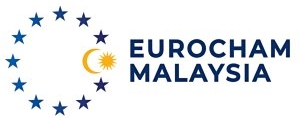KUALA LUMPUR, Aug 5 -- Malaysia and Singapore need to streamline the standard operating procedures (SOPs) before allowing cross-border travel between the two countries to resume after being halted since March due to the COVID-19 pandemic.
Health director-general Datuk Dr Noor Hisham Abdullah said both countries should have a mutual understanding and discuss how to mitigate or address the risks should there be any infections.
He said Malaysia needed to be selective in giving any leeway for fear it might lead to an increase in COVID-19 cases.
"Our time frame for Singapore… we start this month, we can implement it. But again we looked at the situation, where we have seen the data that Singapore's positive rate is at 8.20 per cent (per 1,000 population) while Malaysia's at 0.91 per cent.. we have to decide on who to allow (in).
"Not everyone in Singapore (will be) allowed in, it is a big no to the working group of foreign workers in the country. Perhaps Singaporeans and expats living there for more than six months, they can come in," he said at a webinar held by EU-Malaysia Chamber of Commerce and Industry titled 'Malaysia: Responding to the COVID-19 pandemic', today.
He said Malaysia and Singapore also needed to look into the situations of both countries, and "if conducive for both, then we can do it”.
Moreover, Dr Noor Hisham said discussions with countries like Singapore, Brunei, Australia and New Zealand were still ongoing.
"If one country (is categorised as) red zone, one country (is a) green zone, it is difficult for the green zone to accept tourists from the red zone. We need to look into the situation from time to time. We do in stages for businesses, for example, where you can come in and apply, then we can allow.
"But in terms of mass tourism, we have not allowed, but business ventures are allowed.. we'll quarantine you. There is a risk involved in cross border, both countries need to refine the SOPs before implementing it," he said.
Referring to data on the number of tests per 1,000 population sourced from Our World in Data University of Oxford as of Aug 3, it is stated that Malaysia conducted 30.25 tests with a 0.91 per cent positive rate; followed by South Korea 30.47 tests (0.90 per cent positive rate); Japan 8.63 tests (4.30 per cent); Thailand 5.43 tests (0.90 per cent); Singapore 105.35 tests (8.20 per cent); New Zealand 97.91 tests (0.30 per cent); Canada 109.78 tests (2.80 per cent); and Australia 170.45 (0.40 per cent).
"Malaysia, South Korea and Thailand have a 0.9 per cent positive rate, which means it is well-contained in these three countries, but not in Singapore because yesterday it had 256 cases. So, it means they have to increase their testings.
"Look at New Zealand's 97.91 tests (per 1,000 population), they are very good because their positive rate is only 0.3 per cent. Canada, for example, is doing a lot of tests but its positive rate is at 2.8 per cent,” he said.
Meanwhile, he said there were plenty of lessons to be learned from all the countries on how to deal with the pandemic, adding that Malaysia had, thus far, been blessed to be able to wade through these past few turbulent months without any catastrophic effects to the nation's health and economy.
“These are all possible due to the strong leadership and confidence of the people towards science and facts, not rumours and fears,” he said.
Also present at the webinar were EuroCham Malaysia deputy chairman Luciano Pezzota and chief executive officer Sven Schneider.
Source: BERNAMA






